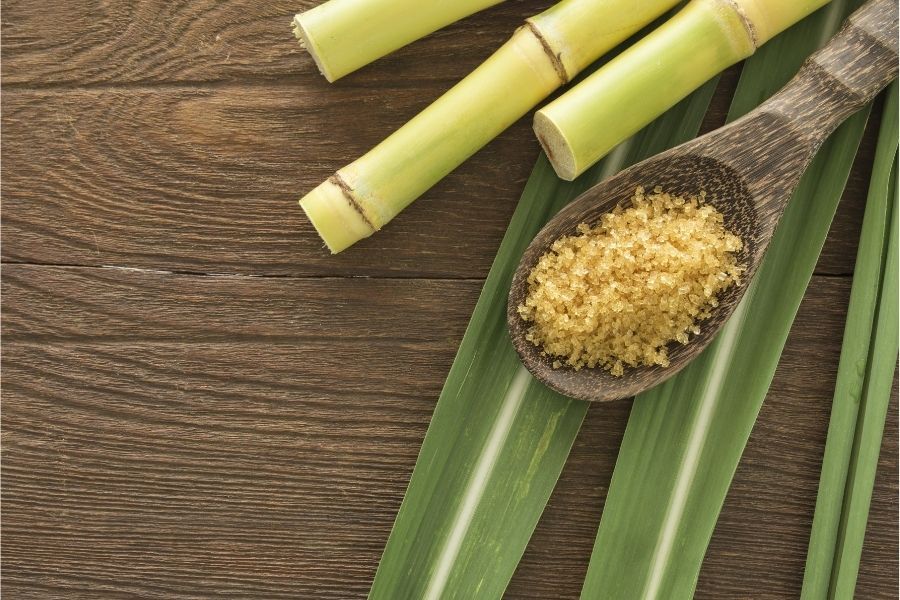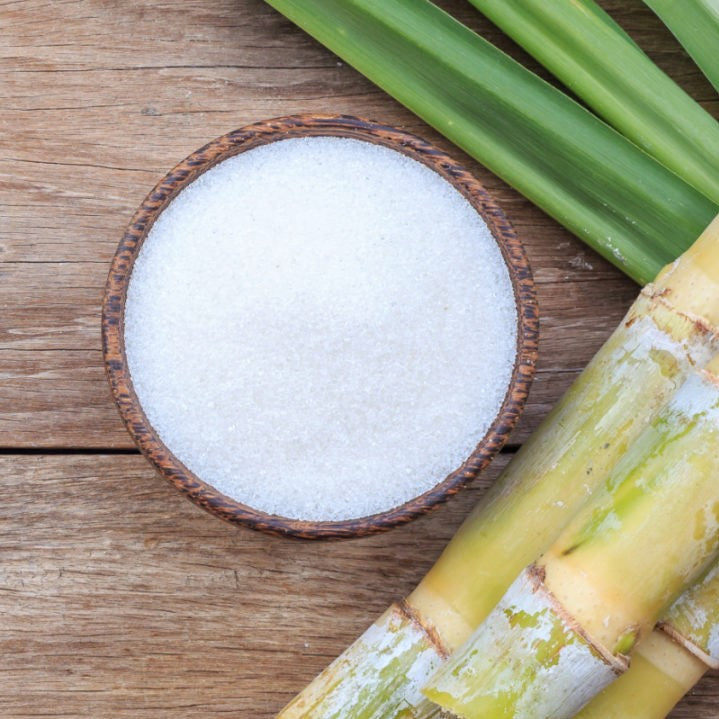Effective Cane Sugar Processing: Making Best Use Of Return and Purity
Effective Cane Sugar Processing: Making Best Use Of Return and Purity
Blog Article
An Extensive Guide to the Environmental Effect and Sustainability Practices in Walking Stick Sugar Processing
The environmental influence of walking cane sugar processing provides a complex range of challenges that warrant careful exam. From dirt degradation and too much water usage to the carbon footprint linked with growing and production, the repercussions of conventional techniques are far-reaching. What certain methods can be executed to strike an equilibrium between productivity and environmental stewardship?
Summary of Cane Sugar Processing
Cane sugar processing entails a collection of methodical steps that change sugarcane into polished sugar. At first, harvested sugarcane is transported to refining facilities, where it undergoes cleaning to get rid of soil and particles. Following this, the cane is crushed to extract juice, which is after that made clear by eliminating pollutants via heating and the enhancement of lime.
The cleared up juice goes through evaporation, where water is gotten rid of to focus the sugar content. These crystals are divided from the remaining syrup utilizing centrifugation, resulting in raw sugar.
The end product is then dried out and packaged for distribution. Throughout this whole procedure, maintaining performance and top quality control is vital to ensure the sugar meets industry standards. Each step in walking cane sugar handling not just adds to the end product but also has effects for source use and waste generation, establishing the phase for discussions on sustainability and environmental impacts related to sugar production.
Ecological Difficulties of Production
The production of walking stick sugar provides a number of significant environmental obstacles that warrant interest. One primary concern is the substantial use agrochemicals, including chemicals and fertilizers, which can lead to dirt degradation, biodiversity loss, and contamination of regional water resources. The runoff from sugarcane fields typically lugs these chemicals right into neighboring environments, interfering with water life and influencing the wellness of communities reliant on these water bodies.
One more challenge is the high power usage connected with sugarcane processing. The boiling and refining phases require substantial warm, largely produced by shedding fossil gas, adding to greenhouse gas discharges. Furthermore, the extensive land area required for sugarcane growing can cause logging and habitat devastation, additional worsening environment adjustment and harmful wildlife.
In addition, the labor methods in some areas increase honest concerns, as employees may encounter poor working problems and insufficient earnings. This situation frequently continues a cycle of hardship in regional neighborhoods. Cane Sugar Processing. Dealing with these ecological challenges is important for creating much more lasting practices in walking cane sugar production, ultimately profiting both the setting and the areas associated with this industry
Water and Land Use Influence
Water sources and land application are important parts in the cane sugar industry that significantly influence the setting. The cultivation of sugarcane requires significant water input, with estimates recommending that it can eat up to 2,000 litres of water per kg of sugar generated. This extensive use water typically brings about deficiency of local water sources, impacting not just the sugarcane plantations but also surrounding ecological communities and neighborhoods that depend on the very same water investigate this site resources for farming and residential usage.

Furthermore, land use for sugarcane farming can result in deforestation and the conversion of all-natural environments right into monoculture ranches. This technique diminishes biodiversity, disrupts neighborhood ecosystems, and contributes to dirt deterioration. The development of sugarcane areas typically elbows in on beneficial agricultural land, creating competition for sources in between food and biofuel production.
Lasting methods, such as enhancing watering methods and executing plant rotation, are essential to mitigate these influences. By embracing more reliable water usage and land monitoring techniques, the walking stick sugar industry can minimize its environmental footprint, making certain a balance between agricultural efficiency and environmental conservation.
Greenhouse Gas Emissions
Greenhouse gas emissions stand for a substantial ecological worry within the cane sugar handling sector, particularly as agricultural practices expand to satisfy worldwide demand. The growing of sugarcane, a plant that thrives in tropical environments, relies heavily on artificial fertilizers and chemicals, find out which add to nitrous oxide discharges. Additionally, land-use modifications, consisting of logging for brand-new sugarcane vineyards, release carbon dioxide stored in plants and dirt.
Throughout processing, energy intake is one more significant resource of greenhouse gas discharges - Cane Sugar Processing. Lots of sugar mills use nonrenewable fuel sources to power equipment and produce warm, resulting in significant carbon impacts. In addition, the transportation of raw sugarcane and ended up items includes layers of discharges via gas burning in vehicles
The cumulative result of these exhausts worsens climate adjustment, presenting threats not just to the environment however also to the long-term viability of the sector. Stakeholders should recognize the urgent need for thorough strategies that attend to these emissions. This includes assessing current farming practices, refining approaches, and transport systems to recognize locations for enhancement and mitigation. Attending to greenhouse gas exhausts is important for fostering a more lasting cane sugar industry in a transforming environment.

Sustainable Practices and Innovations
Sustainable practices and technologies are progressively vital in the walking stick sugar processing market as stakeholders seek to minimize ecological impacts while maintaining productivity. One considerable innovation is the execution of integrated plant administration, which enhances resource use by combining soil monitoring, bug control, and crop rotation methods. This method improves return while minimizing chemical inputs and preserving dirt health.
Moreover, the fostering of renewable resource sources, such as biomass from sugarcane residues, has actually gained grip - Cane Sugar Processing. By converting waste products right into power, refining facilities can decrease their dependence on fossil fuels, thereby decreasing greenhouse gas exhausts
Water monitoring practices have actually also seen renovations through the recycling and reusing of water in handling plants, considerably reducing freshwater consumption. Innovations in modern technology, such as precision agriculture, enable farmers to keep track of crop health and resource use more properly, making sure sustainable growing practices.
Additionally, accreditation programs like Fair Profession and Jungle Alliance urge ecologically accountable farming methods and advertise social equity within the supply chain. By welcoming these sustainable methods and advancements, the walking stick sugar handling market can enhance its durability and add favorably to environmental stewardship.
Conclusion
The environmental influence of walking stick sugar handling presents considerable challenges, consisting of dirt deterioration, high water intake, and greenhouse gas exhausts, together with honest issues associated with labor methods. Addressing these concerns with lasting methods, such as integrated crop monitoring, sustainable power adoption, and water recycling, is important. By promoting ecologically liable and socially equitable methods in sugar manufacturing, the market can mitigate its negative impacts, making certain an extra lasting future for both neighborhoods and environments involved in this industry.
Walking cane sugar handling involves a collection of organized steps that transform sugarcane into polished sugar. Each action in walking cane sugar processing not only contributes to the last item but likewise has effects for resource usage and waste generation, establishing the stage for conversations on sustainability and ecological impacts associated with sugar manufacturing.
Greenhouse gas discharges stand for a substantial environmental concern within the walking cane sugar handling industry, especially as farming techniques increase to fulfill worldwide demand.Sustainable practices and developments are significantly vital in the walking stick sugar processing industry as stakeholders look for to lower ecological effects while maintaining performance.The environmental impact of walking stick sugar handling visit this web-site offers considerable obstacles, including soil deterioration, high water usage, and greenhouse gas emissions, along with honest problems related to labor techniques.
Report this page